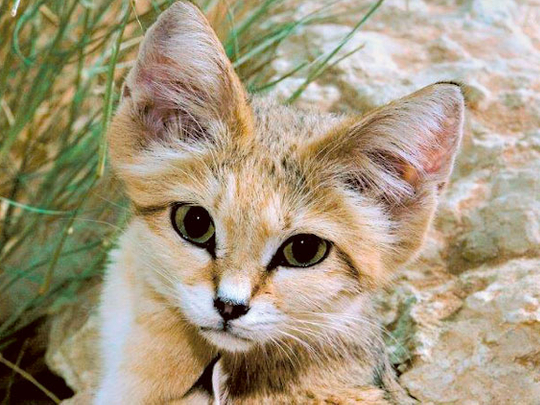
Al Ain: Al Ain Zoo has teamed up with WildGenes Laboratory, a genetic laboratory at the Royal Zoological Society of Scotland (RZSS), to use the laboratory’s DNA expertise for a research project on the zoo’s Arabian sand cat population.
During the research the cats’ blood samples will be used to extract their DNA and develop the genetic markers suitable for parentage testing and analysing genetic diversity, said a zoo spokesperson on Monday.
These markers will help establish a captive breeding programme, comparing the relatedness of the cats at Al Ain to those from other captive populations. The genetic tools being developed by WildGenes will also be used to monitor the UAE’s wild sand cat populations via the analysis of faecal samples that will help experts estimate the range and population size of the species in the wild.
With 32 animals, Al Ain Zoo has the largest known captive population of Arabian sand cats in the world.
“Little is, however, understood about their genetics or the species in general,” said Mona Al Daheri, Acting Chief of Conservation and Education at Al Ain Zoo.
She said the project will hopefully serve as a catalyst for conservation efforts in the region.
“This initiative will pave the way for coordination with local and regional partners to develop a cohesive population management programme for the Arabian sand cat in the Arab world,” she added.
Dr Helen Senn, research scientist at the RZSS laboratory, said that it was an important project for conserving the Arabian sand cat. Desert environments tend to be overlooked in terms of conservation work, she said, and many species are extinct or on the brink of extinction.
“Although the sand cat is classed as near threatened, as a whole, the threat to the local populations can be much greater,” said Dr Senn.
The sand cat lives deep in the deserts of Arabia, North Africa and Central Asia. The Arabian cat can survive for months without water and has thick fur on its paws to protect itself from the hot ground. The animal also makes burrows in the sand to cope with the extremes of midday and night-time temperatures, and is the only species of cat to truly inhabit the desert.
Degradation of the desert environment has led to the decline of many species, including the sand cat, said the zoo’s spokesperson. The International Union for Conservation of Nature (IUCN) Red List of Threatened Species lists the cat as near threatened.
The Arabian sand cat is, however, classified as endangered on both the UAE’s and Abu Dhabi’s regional IUCN Red Lists, with only four reliable sightings in the emirate since 1995.
“Due to the mysterious nature of this species, it is extremely challenging to estimate exactly how many individuals are left in the wild,” the spokesperson added.












